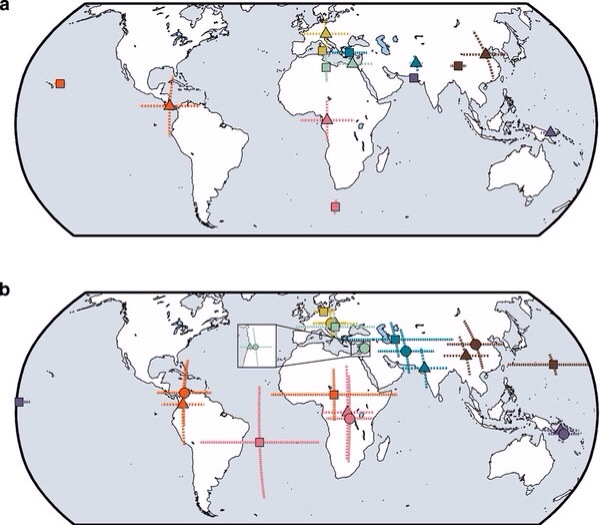Tracing where your DNA was formed over 1,000 years ago is now possible due to a revolutionary technique developed by a team of international scientists led by experts from the University of Sheffield.
Geographic Population Structure techniques can now locate the village your ancestors lived in whereas previous tools were only accurate to within 700km. The breakthrough also has massive implications for life-saving personalised treatment.
The GPS tool, created by Dr Eran Elhaik from the University of Sheffield’s Department of Animal and Plant Sciences and Dr Tatiana Tatarinova from the University of Southern California, works similarly to a satellite navigation system as it helps you to find your way home, but not the one you currently live in, but rather your actual ancestor’s home from 1,000 years ago.
Previously, scientists have only been able to locate where your DNA was formed to within 700kms, which in Europe could be two countries away; however this pioneering technique has been 98 per cent successful in locating worldwide populations to their right geographic regions, and down to their village and island of origin.
The breakthrough of knowing where the gene pools that created your DNA were last mixed has massive implications for life-saving personalised medicine, advancing forensic science and for the study of populations whose ancestral origins are under debate, such as African Americans, Roma gypsies and European Jews.
Genetic admixture occurs when individuals from two or more previously separated populations begin interbreeding. This results in the creation of new gene pools representing a mixture of the founder gene pool.
Such processes are extremely common in history during migrations and invasions, for example, when the Vikings invaded Britain and Europe in the 11th Century and settled with locals some of them formed a new Viking-Anglo-Saxon gene pool, but some married other Vikings and maintained their original gene pool, allowing GPS to trace their Scandinavian origins.
Dr Eran Elhaik said: “If we think of our world as being made up of different colours of soup – representing different populations – it is easy to visualise how genetic admixture occurs. If a population from the blue soup region mixes with a population from the red soup region their off-springs would appear as a purple soup.
“The more genetic admixture that takes place, the more different colours of soup are introduced which makes it increasingly difficult to locate your DNA’s ancestry using traditional tools like Spatial Ancestry analysis (SPA) which has an accuracy level of less than two per cent.”
He added: “What we have discovered here at the University of Sheffield is a way to find not where you were born, as you have that information on your passport, but where your DNA was formed up to 1,000 years ago by modelling these admixture processes.
“What is remarkable is that, we can do this so accurately that we can locate the village where your ancestors lived hundreds and hundreds of years ago – until now this has never been possible.”
To demonstrate how accurate GPS predictions are, Dr Elhaik and his colleagues analysed data from 10 villages in Sardinia and over 20 islands in Oceania. The research published in the journal Nature Communications shows that Dr Elhaik and his team were able to place a quarter of the residents in Sardinia directly to their home village and most of the remaining residents within 50km of their village. The results for Oceania were no less impressive with almost 90 per cent success of tracing islanders exactly to their island.
“This is a significant improvement compared to the alternative SPA tool that placed Oceanians in India,” said Elhaik.
Dr Elhaik’s co-author, Dr Tatiana Tatarinova, developed a website making GPS accessible to the public.
“To help people find their roots, I developed a website that allows anyone who has had their DNA genotyped to upload their results and use GPS to find their ancestral home,” said Dr Tatarinova, who is also an Associate Professor of Research Paediatrics at the Keck School of Medicine of the University of Southern California.
“We were surprised by the simplicity and precision of this method. People in a given geographical area are more likely to have similar genetics. When they also have genetic traits typically found in other, distant regions, the geographical origin of those traits is generally the closest location where those traits can be found.”
According to the researchers, in ethnically-diverse regions like the UK or US, where many people know only a few generations of their descendants, this kind of screening has huge, important medical implications.
Discovery of a certain genotype might indicate the potential for a genetic disease and suggest that diagnostic testing be done. Also, as scientists learn more about personalized medicine, there is evidence that specific genotypes respond differently to medications—making this information potentially useful when selecting the most effective therapy and appropriate dosage. The investigators are currently designing a study to correlate pharmacokinetics – the time course of drug metabolism – with genotype.







